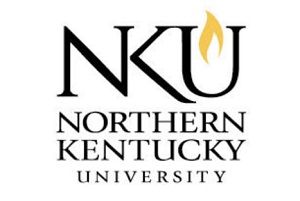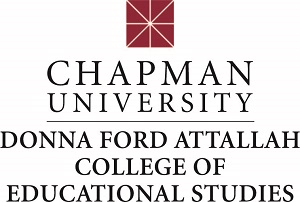

 Special to the Philanthropy Journal
Special to the Philanthropy Journal
By Lindsey M. McDougle, PhD, Rutgers University-Newark; Danielle McDonald, PhD, Northern Kentucky University; Huafang Li, PhD, Grand Valley State University; Whitney McIntyre Miller, Chapmin University; and Chengxin Xu, MPA, Rutgers University-Newark

 The following resource article is part of an emerging collaboration with Nonprofit and Voluntary Sector Quarterly (NVSQ) to help translate research into practice. The original research article Can Philanthropy Be Taught? first published on August 11, 20016 and appeared in NVSQ Volume 46, Issue 2, April 2017.
The following resource article is part of an emerging collaboration with Nonprofit and Voluntary Sector Quarterly (NVSQ) to help translate research into practice. The original research article Can Philanthropy Be Taught? first published on August 11, 20016 and appeared in NVSQ Volume 46, Issue 2, April 2017.
Experiential philanthropy is an innovative teaching and learning approach that allows students to study social problems and then invest funds into nonprofit organizations that they consider to best able to solve the social problems they learn about. Experiential philanthropy has become widespread within higher education and many within the field have begun recognizing its potential for developing future philanthropists. Despite this potential, there has been little evidence of the effectiveness of experiential philanthropy on students—or, communities. Therefore, we conducted a study to explore learning and development outcomes associated with the use of experiential philanthropy in the college classroom, and to ultimately answer the question: Can philanthropy be taught?
Most of us have heard the assertion that the purpose of a college education is to prepare students for a job. But, in recent years we’ve also increasingly heard the counterpoint that, while job prep is important, it is not the sole purpose of higher education. This counterpoint has led colleges and universities to begin focusing greater attention on educating students for lives of responsible citizenship, not merely for job success. Professional organizations have also begun calling upon educators to begin developing curriculum that builds students’ character in addition to building their professional skills.
Experiential philanthropy, therefore, has emerged as a way to not only develop students’ educational ability but to also encourage them to meet challenging social problems facing their communities. Experiential philanthropy aims to teach students not only about the theories of philanthropy, but also about how to evaluate philanthropic responses to social issues. The approach also aims to directly benefit nonprofit organizations by providing them with critical resources and access to a potential supply of new and highly motivated donors. As a result, some have begun to view experiential philanthropy as one of the most promising ways of developing the next generation of philanthropists.
How Does it Work?
 Typically, experiential philanthropy classes begin like this: a community donor provides a class with a sum of money. The amount can range anywhere from $500 to $150,000. The task for the students in the class is to decide how to invest the money in nonprofit organizations in a way that will provide a community benefit. To date, over 100 colleges and universities in the United States have developed experiential philanthropy courses and programs, and in total students in these courses and programs have awarded over $10 million to nonprofit organizations across the country.
Typically, experiential philanthropy classes begin like this: a community donor provides a class with a sum of money. The amount can range anywhere from $500 to $150,000. The task for the students in the class is to decide how to invest the money in nonprofit organizations in a way that will provide a community benefit. To date, over 100 colleges and universities in the United States have developed experiential philanthropy courses and programs, and in total students in these courses and programs have awarded over $10 million to nonprofit organizations across the country.
Our Study
Giving away money – particularly when it’s not yours – can be fun. But does it actually teach students anything about philanthropy or how to be a philanthropist? And, can students recognize when an organization offers a viable solution to a social problem, and isn’t just tugging at their heartstrings?
 To find out, we surveyed more than 600 Northern Kentucky University students who had taken an experiential philanthropy course there from 2009 to 2013. At Northern Kentucky University, teaching about philanthropy is not an after-school activity or a class add-on. It is an integral part of course instruction. This philosophy has led instructors at the university to incorporate experiential philanthropy into courses that focus on everything from “Costume Design” to “Resource Acquisition and Management.” Since 1999, through these experiential philanthropy courses, students at Northern Kentucky University have invested over $1.5 million in 348 nonprofit organizations.
To find out, we surveyed more than 600 Northern Kentucky University students who had taken an experiential philanthropy course there from 2009 to 2013. At Northern Kentucky University, teaching about philanthropy is not an after-school activity or a class add-on. It is an integral part of course instruction. This philosophy has led instructors at the university to incorporate experiential philanthropy into courses that focus on everything from “Costume Design” to “Resource Acquisition and Management.” Since 1999, through these experiential philanthropy courses, students at Northern Kentucky University have invested over $1.5 million in 348 nonprofit organizations.
To answer the question of whether philanthropy can be taught, we developed surveys based on research showing areas where service-learning tends to benefit students most: civic responsibility, academic learning, and life skills. We then surveyed students at the beginning and end of each semester that they were taking an experiential philanthropy class.
What did we find?
 We found that, at the end of their experiential philanthropy classes students believed that they had learned a lot more about nonprofits and the philanthropic process. They were also more interested in making a difference in their community by giving and volunteering at local nonprofits. And, the vast majority of the students indicated that now knew more about issues affecting their community and which nonprofits in their communities were doing something about them.
We found that, at the end of their experiential philanthropy classes students believed that they had learned a lot more about nonprofits and the philanthropic process. They were also more interested in making a difference in their community by giving and volunteering at local nonprofits. And, the vast majority of the students indicated that now knew more about issues affecting their community and which nonprofits in their communities were doing something about them.
Our findings suggest that by studying-and actually engaging in-philanthropy students learn more about philanthropy, why they should do it, and how they can make a philanthropic difference in their own communities. Students also learn how to actively seek effective philanthropic solutions—and, not just to throw money at problems. For us, then, as college and university professors who teach students about philanthropy and nonprofits, experiential philanthropy can be one way to not only help students better understand more about these topics, but also get them excited about being involved in their communities.
Why should you care?
All of these findings ought to be encouraging—especially for those who think that today’s young people are disinterested in giving back or that they’re disconnected from the realities of societal ills. According to our findings, generally, they are not.
Many young people have simply never had an opportunity to seriously think about the possible impacts of their philanthropic contributions, let alone assume the role of a major donor. As a result, they have never even considered what it might mean (both to themselves as well as to their communities) to make a large philanthropic investment into social change efforts. However, by having an opportunity to engage in giving (and learning) with a group of their peers, we find that young people are able to understand philanthropy’s impact—so much so that after participating in these hands-on philanthropic experiences they commit to not only continuing but also increasing their philanthropic efforts.






